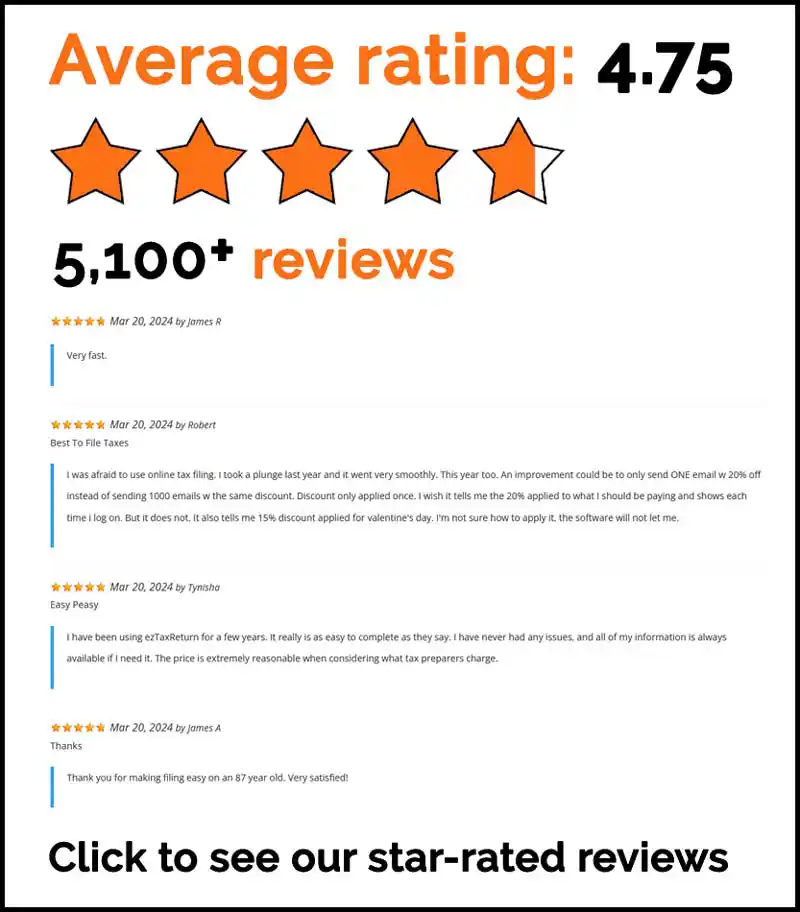The information in this article is up to date for tax year 2024 (returns filed in 2025).
Want to learn how the solar panel tax credit can save you money on installation costs? This article explains what the credit is, how it works, and how you can make the most of it.
Key Takeaways
- The Solar Panel Tax Credit offers homeowners a massive 30% tax break on installation costs!
- Eligible costs for the tax credit include both purchase and installation expenses, while energy storage systems installed after 2022 can also qualify!
- Don’t miss out on the long-term benefits! The credit is available until 2034, and you can combine it with state incentives for even greater savings!
What is the Solar Panel Tax Credit?
The federal Solar Tax Credit, also known as the Residential Clean Energy Credit, is a valuable incentive designed to make solar energy systems more affordable for homeowners. As an Investment Tax Credit (ITC), it offers a tax break to encourage investment in renewable energy. This credit helps homeowners recover a significant portion of solar panel installation costs, making clean energy more accessible. There are no income restrictions, so anyone who installs a qualifying solar system can benefit.
One of the most appealing aspects of the solar investment tax credit is the potential for savings—homeowners can recoup up to 30% of their installation costs. The U.S. Department of Energy estimates that this could save an average of $7,500 on solar expenses, making it both an eco-friendly and financially smart choice.
Thanks to the Inflation Reduction Act, the solar investment tax credit has been extended through 2034, offering a long-term opportunity for homeowners to invest in solar and help drive the growth of the industry.
How Does the Solar Tax Credit Work?
The mechanics of the federal solar tax credit are straightforward, yet they pack a powerful punch in reducing your federal income tax liability. Essentially, the tax credit is a dollar-for-dollar reduction in the amount of federal taxes you owe, directly lowering your income tax bill. This means that if your solar energy system costs $30,000, you can reduce your federal tax bill by $9,000 – a substantial saving!
To be eligible for the solar tax credit, you must own your solar energy system outright, rather than lease it. There’s no income limit for claiming the credit, making it accessible to a wide range of homeowners. The credit rate is 30% of the cost of your solar system, and this rate is locked in through 2032. However, the credit will reduce to 26% in 2033 and will gradually phase out by 2035, so it’s wise to take advantage of the full 30% rate while it lasts.
One of the best features of the credit is its flexibility. If you don’t owe enough in federal taxes to use the full value of the credit in one year, you can roll over the unused portion to subsequent years. This rollover feature ensures that you can maximize the benefit of the credit over time.
To qualify for the Residential Clean Energy Credit, your solar system must be newly installed and cannot have been previously claimed by another taxpayer. Additionally, you must file for the credit in the year your system becomes operational, which may not necessarily be the same year it was installed.
Eligible Costs for the Solar Panel Tax Credit
To make the most of the federal solar tax credit, it’s essential to know which costs are eligible for the 30% tax break. The credit applies to both the purchase and installation of solar energy systems, covering everything from the solar panels to installation labor. However, structural modifications solely for supporting the panels, such as reinforcing the roof, are not eligible.
Additionally, energy storage systems with a minimum capacity of 3 kWh qualify for the credit if installed after December 31, 2022. This allows homeowners to pair solar systems with storage solutions, ensuring they can use solar power even when the sun isn’t out.
Qualified expenses for the federal solar tax credit include:
- Solar photovoltaic (PV) panels
- Solar panel installation labor
- Inverter systems
- Solar batteries (minimum 3 kWh capacity, installed after Dec 31, 2022)
- Wiring and electrical components
- Roof upgrades related to solar panel installation (but not structural modifications solely for support)
By understanding these eligible expenses, you can make smarter choices and maximize your savings on solar energy.
Claiming the Solar Panel Tax Credit
Claiming the federal solar tax credit involves a few critical steps, but with the right guidance, it can be a straightforward process. The first and most crucial step is to file IRS Form 5695, which is specifically designed for claiming the solar tax credit. Correctly submitting this form is essential to ensure you receive the full benefit of the credit.
Maintaining thorough documentation of your solar panel installation is vital. This includes invoices, receipts, and any other paperwork related to the purchase and installation of your solar energy system. These documents will serve as proof of your expenses and eligibility for the tax credit. You can claim the Residential Clean Energy Credit for the year your system is installed and receives permission to operate, which may differ from the installation year.
ezTaxReturn can help ensure Form 5695 is completed accurately, so you get the maximum credit. It can only be claimed for the tax year in which the solar panel system is installed, so timing is crucial in ensuring you don’t miss out on the benefit.
Combining the Solar Tax Credit with Other Incentives
One of the most exciting aspects of the federal solar tax credit is its ability to be combined with other incentives, further reducing the overall cost of your solar energy system. State-level incentives and utility rebates can significantly lower your upfront costs, though they may affect the total cost considered for the federal tax credit.
Understanding how these additional incentives interact with the federal tax credit is crucial. For example, utility rebates are typically subtracted from your system’s total cost before calculating the federal tax credit, potentially lowering the credit amount. However, combining these incentives can still result in substantial savings. Net metering credits, which provide billing credits for excess electricity generated by your solar panels, and SRECs, which allow you to earn money for the electricity your system produces, are additional financial benefits to consider.
Federal incentives have played a crucial role in both residential and commercial sectors, enabling significant investments in solar energy and leading to reduced overall costs. The federal solar tax credit alone has catalyzed a significant rise in solar adoption, contributing to a 200% increase in the industry over the past 20 years.
Combining the federal solar tax credit with other available incentives maximizes your savings and makes the transition to solar energy even more affordable.
Key Considerations for Homeowners
As a homeowner, there are several key considerations to keep in mind when planning to take advantage of the solar tax credit. First, it’s important to note that the Residential Clean Energy Credit has been extended to 2034, maintaining a 30% rate for eligible solar installations. This extension provides a long-term incentive for investing in solar energy solutions.
It is a non-refundable credit, meaning it cannot exceed the amount of taxes you owe. However, if your tax liability is lower than the available tax credits, the unused portion can be carried over to future tax years. This rollover feature ensures that you can still benefit from the tax credit even if you don’t owe much in federal taxes in a given year.
Summary
In summary, the federal solar tax credit offers a substantial financial incentive for homeowners looking to invest in solar energy systems. By understanding what the credit is, how it works, and what costs are eligible, you can maximize your savings and make a smart investment in clean energy. The process of claiming the credit is straightforward, and combining it with other incentives can further reduce your overall costs. Now is the perfect time to consider solar energy for your home and join the growing community of solar adopters.
Frequently Asked Questions
What is the federal solar tax credit?
The solar credit lets you reclaim a big chunk of your solar installation costs, making it an awesome financial boost for going solar! Don’t miss out on this fantastic opportunity to save money while embracing renewable energy!
How much can I save with the solar tax credit?
You can save a whopping average of almost $7,500, which is about 30% of your solar installation costs, by taking advantage of the credit! How awesome is that?
What costs are eligible for the solar tax credit?
You can claim the solar tax credit for costs like the purchase and installation of solar panels, labor, equipment, and even sales tax! If you also install an energy storage system with at least 3 kWh capacity after December 31, 2022, that’s included too!
How do I claim the solar tax credit?
You can claim the solar tax credit by filing IRS Form 5695 and ensuring you have proper documentation for your solar installation! Just remember, you can claim it for the year your system is up and running!
Can the solar tax credit be combined with other incentives?
Absolutely! You can combine the solar tax credit with various state and utility incentives, net metering credits, and SRECs to maximize your savings on solar energy systems!
Don’t miss out on your solar tax credit! File your taxes with ezTaxReturn for a simple, hassle-free experience and make sure you’re maximizing all your savings.
The articles and content published on this blog are provided for informational purposes only. The information presented is not intended to be, and should not be taken as, legal, financial, or professional advice. Readers are advised to seek appropriate professional guidance and conduct their own due diligence before making any decisions based on the information provided.




